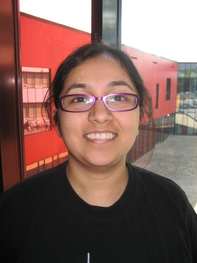Silicon nanowire based hypermethylated DNA detection for early colorectal cancer detection
Promotion date: August 30
Promotor: Prof.dr.ir. Albert van den Berg
Assistant promotor: Dr. Edwin Carlen
| The Nanopill project is an ambitious undertaking with the objective to develop an early-warning cancer diagnostic pill that is ingested by the patient. The Nanopill collects intestinal fluid as the pill travels down the intestinal tract, and tests for the presence of a particular cancer marker in the collected sample; in this case the assay is designed for free floating hyper-methylated DNA (hm-DNA) with a gene sequence specific for colorectal cancer. This thesis focused on the development and realization of an automated microscale bioassay for the capture and enrichment of the hm-DNA colorectal cancer marker and the subsequent detection of the specific DNA sequence using all-electronic silicon nanowire (Si-NW) biosensors without the use of amplification. Since a non-amplification based detection system is used, the hm-DNA cancer marker is captured and pre-concentrated prior to detection. The pre-concentration system has been designed and implemented using a pillar-based glass-silicon microfluidic chip for the solid-phase extraction of hm-DNA. The MBD extraction microchip is designed for the capture and elution of hm-DNA with quantities less than one nanogram per milliliter. A surface plasmon resonance biosensor was used to characterize the hm-DNA capture process. A capture-elution efficiency greater than 90% was shown, consistent with commercial large volume magnetic bead assays. The DNA detection assay is based on Si-NW biosensors that are integrated into a microfluidic auto-sampler system designed and implemented for automated sample delivery |
Was your PhD research project application driven or were also fundamental issues involved?
The project concerning the Nanopill has many aspects, such as, sample collection and pumping using microfluidic technology, the electronic detection of bio-molecules with silicon nanowires, and the wireless result transmission to be received at the user-end with a modern smart-phone. I was responsible for the bio-assay for detecting the presence of hyper-methylated DNA. I looked into performing the two–step assay for detecting both the hyper-methylation and specific DNA sequence. There has been a clear application perspective of the project. This is what I liked about it from the very beginning: the bigger picture was drawn already within which I could formulate and investigate in depth a wide scope of challenging research ideas. I gathered relevant data on both these topics, and also found out about some fundamental problems. By doing so, I contributed to bring the basic bio-assay functional for the Nanopill application.
I especially liked collaborating with the Karolinska Institute in Stockholm, Sweden. The team there is specialized on radiolabelling. I was very welcome to come and work with them, leading to a nice publication with the results I obtained in my three month stay over there. It took my project forward in a decisive way as well, confirming a new molecular orientation could be better for the eventual Nanopill detection. I also confirmed it with surface-plasmon resonance imaging technique at BIOS, Mesa+.
Did you manage to come up with some nice publications?
Two articles were published already, now I am working on a third one. One came out in Analyst, the other in ACS, Applied Materials & Interfaces. Also I was a speaker on the Transducers 2013 Conference in Spain.
What are your future plans?
I feel like doing more research in the near future, harvesting from the things I learned and the experience I built up, especially in the last two years. It took me some time to settle down and to grow as a researcher, being inexperienced at first, as a master student. So, now I hope to continue the good work and develop my skills even further as a post-doc. There are good chances present to do so.
During the thesis project I developed thinking more analytically, more result-oriented and more creative. I learned the basics of knowledge and skills needed, to be strong to become a successful research scientist. The experimental skills I learned here at Mesa+ are numerous, involving for example surface functionalization, molecular printing, surface plasmon resonance imaging and cleanroom fabrication skills. Here at Mesa+ a lot of expertise is present, for example on silicon nanowire fabrication. I received a lot of help from fellow-PhD’s and technicians in our group.
What, in your opinion, is important for Mesa+ to stay successful in future?
The Mesa+ Day is very nice. Renowned speakers are invited and the poster competition is well recognized as the first prize is rewarded by 1000 euro. This helps driving oneself towards excellent research even more.

